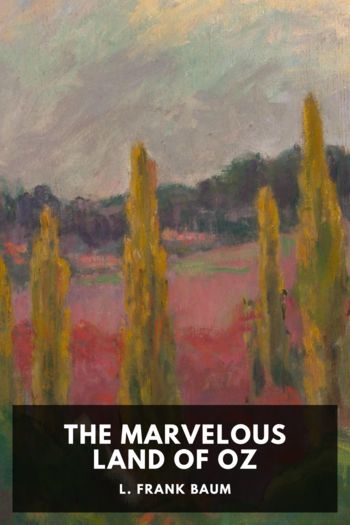How to Be a Sister by Eileen Garvin (icecream ebook reader .TXT) 📗

- Author: Eileen Garvin
Book online «How to Be a Sister by Eileen Garvin (icecream ebook reader .TXT) 📗». Author Eileen Garvin
Another year my sister was obsessed with a blue plastic hairbrush—the only hairbrush in our pathologically thrifty household. She had to know where it was at all times and checked on it several times a day in the bathroom cupboard. This, like every preferred item du jour, always had to be in the same place. If ever it was misplaced, my sister became distraught, then enraged, as if this small piece of plastic were the key to keeping her world righted. And of course things went missing. In a house full of children, nothing stays where it is supposed to.
And Margaret would howl. “Where IS it?! I don’t know where it IS! WHERE IS THE BLUE BRUSH! DO YOU WANT THE BLUE BRUSH! AAAAAAAAAAAAAH-HHHHHH!” Her screaming could last for hours, leaving her exhausted and the rest of us staggering around like a cyclone had just passed through the center of the house.
Another season, Margaret’s autism zeroed in on the strange black bee crawling up the broad picture windows that looked out onto Lake Coeur d’Alene from our summerhouse. She had never shown the slightest interest in insects before, but now she was spellbound. When it stung her hand, she hardly cried at all. Even after her eyes puffed up from an allergic reaction, she was more interested in the bee than what was happening to her. But when she tried to get a closer look at it and smashed the fuzzy creature with a pair of binoculars, all hell broke loose. Her autism wailed in frustration. “The Bee! Where is the Big Black Bee! I don’t know where he IS! NOOOOOOOOO! You want the Big Black BEEEEE! NOOOOOOO!” She struggled with the limp bee body, trying to force it to climb back up the window. When this proved futile, she became hysterical and the small bee body crumbled into pieces. I tried to smash the flaky little pieces back together into some semblance of an insect, but it was the Humpty Dumpty of Big Black Bees. One of my brothers located a large black fly and offered that as a substitute, but Margaret wouldn’t buy it. She just kept screaming. Miraculously we found another Big Black Bee—dead, but in one piece—and taped it to the window so she could watch it. She wouldn’t go to bed until we’d taped the Big Black Bee to the inside of a plastic cup and put it next to her bed on a chair. “There he is! Okay! That’s better now!” she said, taking deep, calming breaths, still stuttered with sobs. Then the autism slept. After a few days she forgot all about the bee, and her quick, impulsive mind seized upon something else. The plastic cup with the bee taped to it gathered dust for weeks until finally somebody thought we were safe and threw it away.
I KEPT SEARCHING for answers, reading whatever I could find. In my deepening appreciation for this disorder, I recognized that autism could be many things to many people. To the parents of people with autism, it often brings a crisis, a life sentence, a tragedy. Being the parent of a child with autism brings loneliness, anger, despair. The parents suffer the loss of the child they will never have, and often they don’t even have time to grieve, because they are too overwhelmed with the child they do have along with all the problems she’s got.
Autism also brings parents hope and the motivation to act. Marriages are ruined or strengthened. Careers are destroyed or somehow clarified. Friends and relatives disappear or make significant and treasured contributions to the family. Sometimes, somehow, a disability simply becomes blended into the reality of life along with everything else, good and bad. As Helen Featherstone writes in A Difference in the Family, “We were knitting Jody, and our new identities as mother, father, and sisters of a severely handicapped child, into the fabric of an ongoing life.”
For people who have autism, the disorder is a burden or a challenge, something to overcome, or perhaps not. A battle against the outer world, a system. Autism is the lack, the missing elements of empathy and intuition that allow people to connect with others. It’s a different life colored by the expectations of other people that autism means magical ability or stupidity. Autism is a trap or a safe haven. It’s a world of loneliness and isolation and a place of creativity. It’s a bull’s-eye that makes a person a target for abuse or a yardstick of accomplishment through improvement. Maybe it’s a defining feature of a personality or just one characteristic of the many complexities that make up a person. Every life is different.
Thinking about this, I couldn’t imagine what my sister would make of her autism. Me, I was just trying to see the person who I thought was in there with it.
WHENEVER I MENTION that I have an autistic sister, people always ask me what Margaret is like. What they really mean, though, is what is her autism like. Is she like Dustin Hoffman in Rain Man? Does she have weird mathematical talents? What does she do? I have stopped trying to answer those unspoken questions, because the truth wouldn’t make sense to the curious. The truth is, I don’t really know how to explain autism or my sister. I can repeat the accepted definition of autism. I can rattle off new theories that I hear on the news almost weekly. But none of that seems





Comments (0)